2013 KCSE Art and Design Past Paper
4.1.1 Art & Design Paper 1 (442/1)
SECTION A (20 marks)
Answer ALL /fie questions in this secfion in the spaces provided
1
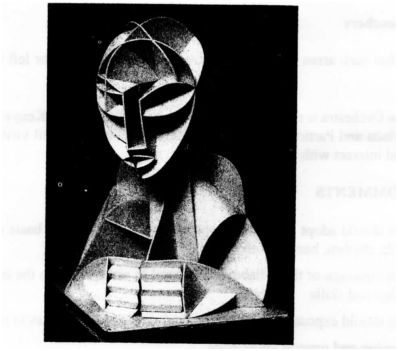
(a) Study the form below.
(i) Identify the material and technique used. (1 mark)
(ii) Name the style used. (1 mark)
(b) Explain the term “wash” in reference to painting technique. (2 marks)
(c) Study the visual symbol below.
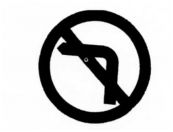
(i) Identify the symbol. (1 mark)
(ii) State its function.
(iii) Classify the symbol.
2.a)State the distinctive characteristic of tritik technique in fabric decoration.
b)Distinguish between warp faced fabric and weft faced fabric.
c)State two functions of value as an element of Art and Design.
d)Explain two ways in which colour can be used to create aerial perspective.
Study the picture below.
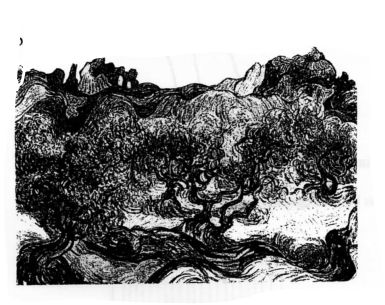
.3 a)Identify the most outstanding principle of Art and Design.
b)State three factors that determine the choice of a pendant.
c)Give two reasons why it is important to fire clay items.
SECTION B (25 marks)
Answer ALL the questions from this section in this spaces provided.
4. a)Distinguish between rjap and tjanting
i)State the role of a fixative in fabric decoration.
ii)Give two reasons for using a double container to melt wax.
iii)Name the components of a letterhead.
(b) Explain two functions of a letterhead. (2 marks)
4 The illustration below represents a foreshortened arm.
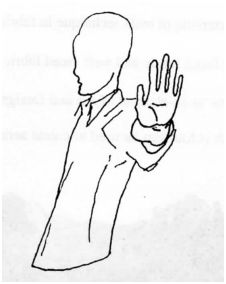
Draw the arm in profile when it is outstretched. (5 marks)
5 The illustration below represents a weaving process.
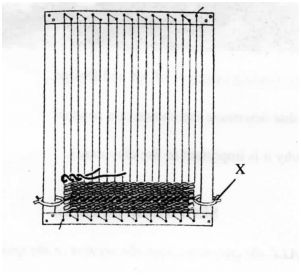
(a) Identify the weave structure. (1 mark)
(b) What is the main function of the part marked X on the illustration. (2 marks)
(c) Explain two ways that one can employ when weaving a mat so that it is firm. (2 marks)
6 Outline any five factors to be considered when using lettering in graphic design. (5 marks)
SECTION C (l5 marks)
Study the composition below.
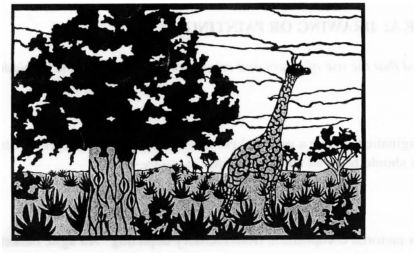
7. Describe how the following pictorial features have been portrayed.
lines (3 marks)
forms (3 marks)
pattern (3 marks)
depth (3 marks)
mood (3 marks)
The illustration below represents an activity within the process of a technique in pottery.

(a) Study the illustration and identify the technique. (1 mark)
(b) State the activity illustrated. (1 mark)
(c) Beginning with ready prepared clay. describe the process of building up a form using the technique. (l3 marks)
9 (a) What is meant by the term design process? (1 mark)
(b) State and describe the aspects to be covered under the following sub-topics in design process:
(i) brief:
(ii) research;
(iii) layout;
(iv) client presentation.
4.1.2 Art & Design Paper 2 Practical (442/2)
Answer only ONE question chosen from EITHER alternative A OR B
ALTERNATIVE A: DRAWING OR PAINTING
You are instructed that the use of rulers and other mechanical devices forbidden in this alternative.
EITHER
1 From imagination, create a pictorial composition based on the theme “Stampede”. The work should be in an area measuring 35 cm by 45 cm.
OR 2 Produce a pictorial composition from memory depicting “An agile basketballer“.
The work should be in an area measuring 35 cm by 45 cm.
ALTERNATIVE B: GRAPHIC DESIGN
You are in.instructed that the use of rulers and other mechanical devices as” well as tracing paper ix allowed.
The colour of the working surface (paper) will not be considered as one of the colours required in any question.
EITHER
3 “Uwezo Women Potters”, a local organisation for economic empowerment dealing in production and sales of African designs requires a logo.
(a) In three colours design the logo measuring I4 cm by I6 cm for the organisation.
(b) In a space measuring 22 cm by 32 cm incorporate the logo at the back of their work coat.
OR
4 A leading confectionery called Boflo dealing in pastries requires a wrapper with a slogan “Fancy Bite” for its bread. – ln three colours design the wrapper measuring 45 cm by 30 cm.
2013 KCSE Art and Design Past Paper-Marking Scheme/Answers
5.1 ART AND DESIGN (442)
5.1.1 Art & Design Paper 1 (442/1)
SECTION A: (20 marks)
1.(a) (i) Material – paper (any brand of paper) / strawboard Construction technique (b) A ‘wash’ is a painting technique in which thin watery paint is applied quickly with large, sweeping brush strokes. 2 marks
(c) (i) Road sign / traffic sign. 1 mark
(ii) Warns drivers of “No left tum”/ commands instructs /guides/ directs drivers. 1 mark
(iii) Mandatory sign/Prohibitive sign/Regulatory sign. 1 mark
(d) Broken linear textual effect! intricate lines patterns. 1 mark
(e) Warp faced fabric shows the warps more predominantly while the weft faced fabric shows the wefts more predominantly warp threads are dominant vertical patterns / threads; weft faced create horizontal patterns. 2 marks
(f) – Describes or models a form/solidity.
– Creates 3 dimensional effect.
– Suggest movement.
– Create illusion of depth and atmospheric effect. Any 2 x 1 2 marks
(g) (i) Painting hazy/pale /dull/greyer colours in the background and clear sharp / bright colours in the foreground. l mark
(ii) Painting warm colours in the foreground and cool colours in the background. l mark
(h) Rhythm/movement 1 mark
(i) – Design (colour, shape,texture, etc.)/ style
– Size
– Weight
– Material
– Functionl fashion trends. Any 3 x 1 3 marks
2. – Enhances the appearance of the clay.
– Hardens the form.
– Makes the clay more durable.
– Makes it porous. Any 2 x 1 2 marks
SECTION B: (25 marks)
Tjap is a metal block with patterns incised on it used for printing with liquid wax.
It is dipped into the wax and then stamped on the surface.
Tjanting is a tool with a copper bowl (reservoir) and a spout used for drawing with wax on a fabric to create patterns/intricate lines.
2 marks
Applying fixative to the dye prevents colours from fading/makes colours fast. l mark
– To prevent wax from heating too fast as it can catch fire
– To retain the heat of the wax.
– To reduce evaporation of the wax.
– Safety precaution from splattering hot wax.
Any 2 x 1 = 2 marks
3.- Logo 1 mark
– Contact address (box no.,website,telephone,physical address) l mark
– Name of the company. 1 mark
– Slogan/motto. 1 mark
– An official communication too] that authenticates an organisation! legitimises an organisation. l mark
– Identifies the company organisation. 1 mark
4
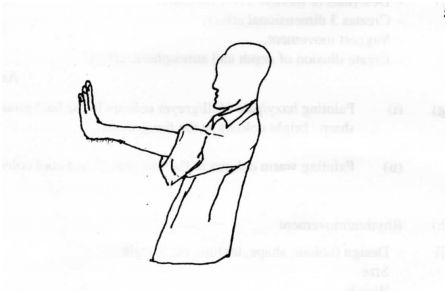
.Outstretched hand – 2 marks
In profile – 2 marks
Accuracy. – 1 mark
Total 5 marks
5.(a) Twinning weave. 1 mark
(b) To fasten the woven edges to the edges of the loom so as to create a straight selvedge and avoid waisting. 2 marks
(c) (i) Pushing down the weft threads after every row with a comb/beater.
(ii) Pulling down the weft threads firmly at the end of every row to maintain even tension
(ii) Crowding the warp threads so that there are no big spaces between them. _ Any 2 x 1 mark each 2 marks
Total (5 marks)
6.(a) Appropriateness of letter style to the message/content.
(b) Uniformity of letter construction.
(c) Consistency of letter formation.
(d) Spacing between letters, words and lines.
(e) Harmony and suitability of lettering to the total design.
(f) Letters should be simple and legible.
Any 5xl mark each 5 marks
SECTION C: (15 marks)
7.Lines:-Lines outline the forms and forms within the forms;Lines distinguish the various forms and spatial levels;Lines distributed all over the composition gives it an overall linear nature.
3 marks
Forms:-Forms are simplified (outlined)Forms are flatForms create pattern.
3 marks
Pattem:-Patterms are formed by outlines, shapes and silhouettes;Crazed/crackled details of the forms;The distribution of light, dark and grey shapes create patterns
3 marks
Depth:-Created by overlapsDistribution of forms in different levelsDifferent sizes of forms at different levels create depth.
3 marks
Mood:-The animals are alert as if there is looming danger;Time seems to be mid-morning or late afternoon;Fright, anxiety, scare. 3 marks
Total 15 marks
164
8.Slab method. 1 mark
Making/rolling a slab. 1 mark
Procedure/process
Make a sketch on the form.
Knead/wedge the clay to make it malleable or workable.
Prepare an absorbent fiat surface using plaster or paris or grog.
Place batons/yardsticks on either side for ensuring even thickness of the slab.
Using a rolling pin, flatten the clay into a slab.
Measure and mark the slabs according to the required sizes and shapes.
Cut the slabs.
Score (scratch) along each edge of the slabs using a sharp tool.
Apply slip/slurry on the scored edges.
Join the slabs starting from the base appropriately to build up the form.
Using a palette knife/spatulalbrush, press and work the edges of the slab to join.
Wet a sponge and use it to rid the clay form off excess slip.
Leave it to dry in a cool place.
l mark each x 13 13 marks
Total 15 marks
9. i)It is the preparation and execution of a design solution. l mark
Brief (getting information from a client)
The client and the designer meet to discuss the specifications of the design problem.
Namely:-Theme/topic/subject matter of the purpose for which the design is required.The target audience.Time frame/ schedule.Materials and techniques.Budget.
5 x 1 mark each 5 marks
ii)Research (Gathering and studying all the related material. Thinking and experimenting).The designer collects relevant data in various aspects of the theme and the required design.
This involves:-Discussions and interviews with relevant people 1 markObservations and analysis of existing and related designs (visual research) 1 markStudy design manuals/amiuals and periodicals. l mark
iii)Layout/composition (exploring alternative solutions)Arrangement of visual elements (typo, letteringjllustrations etc.)Making of preliminary sketchesl determining or selection of design components.Refinement Final artwork .Open work to critique.Making alterations, adjustments and corrections in consultation with experts, professionals , marketers and fellow artists.Finals sketches should be polished and cleaned and exact copy of the design solution presented.
3 x l mark each 3 marks
iv ) Client presentation (selling the design to the client).<-> The artist presents to the client the exact copy of the required work in terms of dimensions, colour, materials and techniques used.Explanation of the use of the elements and features in the design (resume) to enlighten the client. (The client may suggest some changes, improvements, alterations and adjustments.) The final artwork is presented for printing.
3 x l mark each 3 marks
Total 15 marks
5.1.2 Art & Design Paper 2 (447J2)
ALTERNATIVE A: DRAWING PAINTING
QUESTION 1 AND 2
1.INTERPRETATION
(a) Relevance of subject matter to theme
(b) Appropriateness of mood / atmosphere
(c) Dimensions (measurements)
2.COMPOSITION
(a) Appropriate use of space
(b) Appropriate format
(c) Use of principles(unity / rhythm / balance / dominance)
(d) Creativity / imagination / originality
3.FORM / structures
a)Definition of forms
b) Capture of actions
c)Articulation of posture and features
d)Proportions in relation to each other and within forms
4.TONE / COLOUR
(a) Tonal value to create volume / depth
(b) Harmony/contrast
5.CRAFTMANSHIP
(a) Competence in the use of media
(b) Personal qualities
(c) Presentation, neatness and good finish
ALTERNATIVE B: GRAPHIC DESIGN
QUESTION 3 AND 4
1.INTERPRETATION
(i) Subject matter
(ii) Correct dimensions
(iii) Appropriate format
(iv) Requirements: understanding of graphic design process
(v) Mood / symbolism in relation to subject matter
2. COMPOSITION
(i) Layout of pictorial forms / letters
(ii) Rhythm unity/balance
(iii) Spacing of letters, words and lines
(iv) Originality / creativity / imagination
3.FORM / STRUCTURE
(i) Definition of forms (pictorial / letters)
(ii) Proportion of fomis (pictorial / letter) in relation to each other and whole 10 30
(iii) Appropriateness of forms / pictorial / letters to function
4.COLOUR
(i) Appropriate colour
(ii) Harmony/contrast
5.PROFESSIONAL SKILLS
(i) Precision
(ii) Neatness
(iii) Presentation/finish

